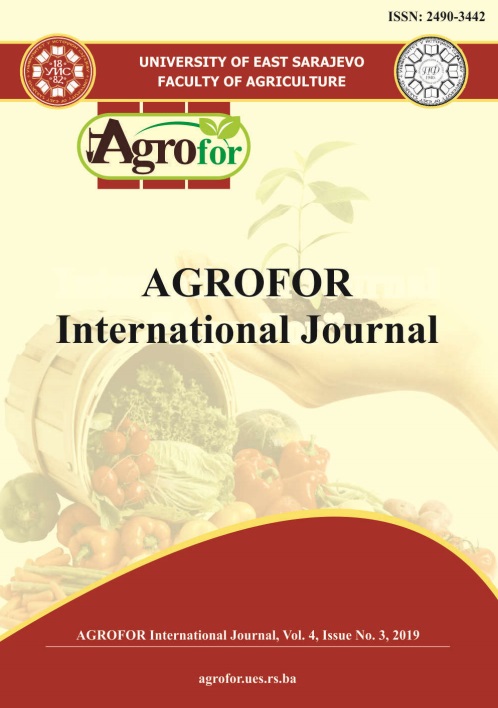DIFFERENTIATION OF MAIZE LINES WITH HIGH CONTENT OF CAROTENOIDS USING PROTEIN AND DNA MARKERS
DOI:
https://doi.org/10.7251/AGRENG1903005PAbstract
Wide natural variety of carotenoids, including vitamin A precursors, is characteristic of maize (Zea mays L.), which allows using it to combat vitamin A deficiency in the world. Previous studies have established the effectiveness of the use of functional DNA markers in the selection of maize lines with a high content of carotenoids in grain. However, not only improving grain quality but also creating highly productive hybrids competitive on the grain market is currently important. The purpose of our study was to determine the genetic diversity of maize lines using storage protein and DNA markers, as well as to find correlations of two marker systems with FAO characteristics. On the basis of maize lines selected for high content of carotenoids, the allelic state of six SSR markers (phi022, phi034, phi062, phi073, phi079, phi085), electrophoretic spectra of zein and their electrophoretic mobility have been determined. Cluster analysis of maize lines using electrophoretic spectra of zein yielded eight clusters. It was found that the minimum genetic distance was 4.24 and the maximum 7.48 Cluster analysis by the identified alleles for SSR markers allowed to form seven clusters according to the affinity of the lines. Range of changes in genetic distances was from 1.00. to 3.46 The analysis of genetic distance matrices, using the Mantel test, found a correlation between the marker systems under study (r = 0.184). A correlation between the studied marker systems and their relation to FAO characteristics was established. Therefore, in order to increase selection efficiency of maize, it is advisable to use an integrated approach to the evaluation of breeding genotypes involving protein and DNA markers.

